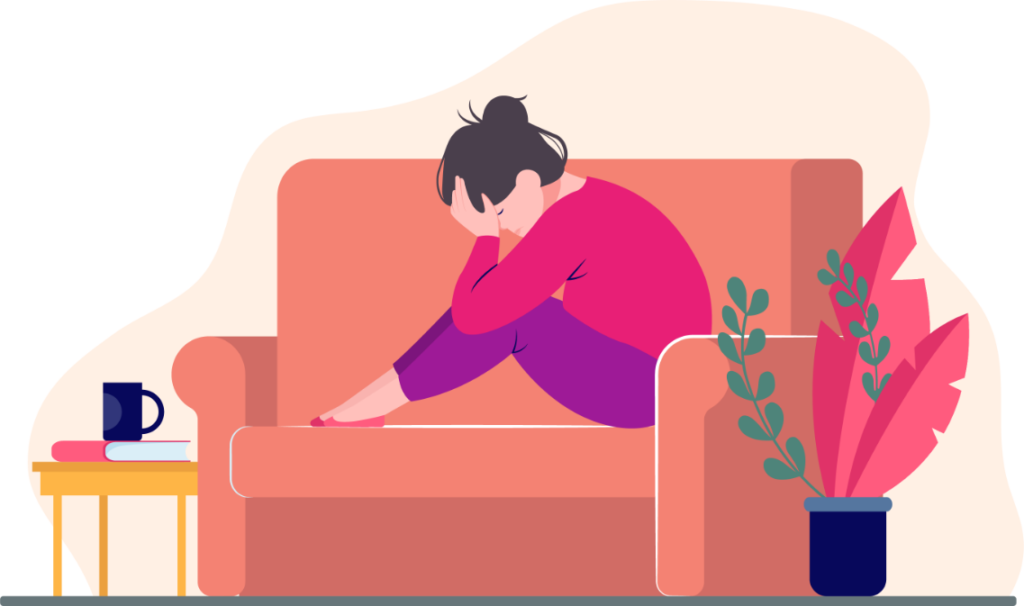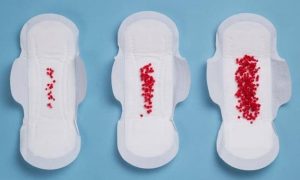Period cramps can be incredibly debilitating, preventing women from going about their daily routine. While there are several ways to alleviate period cramps, did you know that your diet can play a crucial role in reducing menstrual discomfort?
In this blog post, we’ll explore how making simple dietary changes can help you tackle period cramps and make your menstrual cycle more manageable
What Causes Period Cramps?
Period cramps are caused by contractions in the uterus triggered by prostaglandins, chemicals produced by the lining of the uterus. These contractions help shed the uterine lining during menstruation. Higher levels of prostaglandins lead to more intense uterine contractions and worse menstrual cramps.
Inflammation also plays a key role in period pain. The production of prostaglandins causes inflammation in the uterus. This inflammation then further stimulates the release of prostaglandins, causing a feedback loop that increases cramping. Limiting inflammation is an important way to reduce menstrual cramps.
Besides prostaglandins and inflammation, other factors can influence period cramps as well. Hormones like estrogen and progesterone affect prostaglandin production and the force of uterine contractions. Genetics can make some women more prone to period pain than others. Health conditions like endometriosis or uterine fibroids can also worsen menstrual cramps. But for most women, prostaglandins and inflammation are the primary drivers of cramping during their period.
Anti-Inflammatory Foods
Eating foods with anti-inflammatory properties can help alleviate menstrual cramps and other PMS symptoms. Here are some top anti-inflammatory foods to focus on:
Omega-3 fatty acids – Found in fatty fish like salmon, mackerel, sardines, and anchovies. Plant-based sources include walnuts, chia seeds, flaxseeds, and Brussels- sprouts. Omega-3s help counter inflammation.
Ginger – Contains powerful compounds like gingerol that limit the production of inflammatory substances. Try grating fresh ginger into stir-fries, smoothies, and tea.
Turmeric – The active compound curcumin is highly anti-inflammatory. Add turmeric to curries, roasted veggies, and lattes.
Cinnamon – Helps inhibit inflammatory enzymes. Sprinkle on oatmeal, baked goods, and coffee.
Colorful fruits and vegetables – Foods high in antioxidants like berries, leafy greens, citrus fruits, tomatoes, cherries, and red peppers can reduce inflammation. Eat a rainbow of produce.
Healthy Fats
Consuming healthy fats can help alleviate period cramps. Healthy fats like avocados, olive oil, nuts, and seeds contain oleic acid and omega-3 fatty acids that have anti-inflammatory properties.
It is suggested that increasing your intake of omega-3s from foods like walnuts, salmon, and flaxseeds may help reduce the production of prostaglandins – hormone-like substances that cause period cramps and pain.
Here are some tips for getting more healthy fats that can help ease menstrual discomfort:
- Eat an avocado daily or use avocado oil for cooking. Avocados are rich in oleic acid, which has been shown to reduce inflammation.
- Cook with olive oil instead of vegetable or canola oil. Extra virgin olive oil contains oleocanthal which acts as a natural anti-inflammatory.
- Snack on a small handful of nuts like almonds, walnuts, or pecans. Nuts provide omega-3s and vitamin E.
- Add seeds like pumpkin, chia, and flaxseeds to your oatmeal, yogurt, or salads. Flaxseeds are one of the richest plant sources of anti-inflammatory omega-3s.
- Use nut butter like almond butter on your toast or in smoothies instead of peanut butter. Almond butter has more omega-3s.
Getting adequate healthy fats from whole food sources can help fight inflammation during your period and provide relief from menstrual cramps.
Vitamins and Minerals
Getting adequate vitamins and minerals in your diet can help alleviate menstrual cramps. Certain vitamins play a key role in muscle relaxation and have anti-inflammatory properties.
Magnesium helps relax muscles and prevents cramping. Foods high in magnesium include dark leafy greens, nuts, seeds, fish, beans, avocados, bananas, and dark chocolate.
Vitamin B1, potassium, and calcium also contribute to easing muscle cramps and cramping. Potassium-rich foods include potatoes, bananas, avocados, and coconut water. For calcium, choose sesame seeds, beans, almonds, yogurt, and leafy greens.
The vitamins zinc and vitamin E have anti-inflammatory effects on the body. Zinc is found in seafood, meat, nuts, seeds, legumes, and whole grains. Vitamin E occurs naturally in plant oils, nuts, seeds, and leafy greens.
Getting a variety of magnesium, potassium, calcium, zinc, and vitamin E in your diet can help prevent painful menstrual cramps. Focus on eating plenty of fruits, vegetables, nuts, seeds, fish, and plant-based oils.
Herbal Teas
Herbal teas can be a great way to help ease menstrual cramps and discomfort. Certain herbs have anti-inflammatory and muscle-relaxing properties that can provide relief.
- Ginger tea is one of the most popular choices for alleviating cramps. Ginger contains compounds called gingerols that are known to have anti-inflammatory effects in the body. Sipping on ginger tea throughout your period can help relax the muscles of the uterus.
- Chamomile tea is another excellent option, as it contains an antioxidant called apigenin that reduces inflammation. Chamomile can help calm cramping and may also relieve PMS symptoms like anxiety and trouble sleeping.
- Raspberry leaf tea is also thought to help tone the uterus and relieve cramping due to its astringent properties. It contains fragarine, which may help relax uterine muscles.
Drinking herbal teas regularly throughout your period helps keep you hydrated, which can also minimize cramps. The nutrients and antioxidants in the teas provide additional benefits.
It’s a good idea to speak with your doctor before trying any herbal remedies, as some teas may interact with the medications you are taking. Start slow with any new teas and stop drinking immediately if you have any adverse reactions. But for most women, herbal teas can be a safe and gentle way to find relief from menstrual discomfort.
When to See a Doctor?
While diet and lifestyle changes can help alleviate many cases of painful menstrual cramps, it’s important to be aware of symptoms that may require medical treatment. If your cramps are severe and don’t respond to over-the-counter pain medication, it’s a good idea to see your doctor.
Some warning signs that indicate a need for medical care include:
- Fainting or feeling lightheaded
- Vomiting
- Cramps that consistently disrupt your daily activities
- Cramps that don’t respond to heat, rest, massage, or OTC medication
If you experience any of these symptoms, make an appointment with your doctor to discuss treatment options. They may prescribe stronger pain relievers or explore potential underlying causes like endometriosis or fibroids.
The good news is that even if you need medical treatment, lifestyle measures like diet can still provide additional relief alongside medication. A nutritious, anti-inflammatory diet may help make your periods more bearable. Just be sure to consult your doctor if your cramps become debilitating. Taking care of your health is the most important priority.
Lastly, don’t forget to choose the most comfortable cotton pads for periods such as the best sanitary pads for heavy flow.







